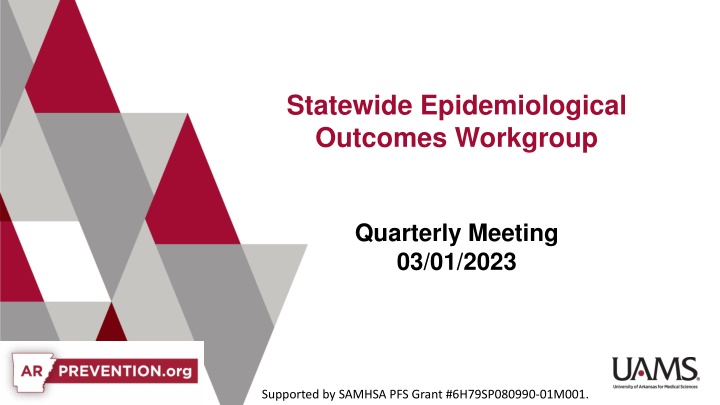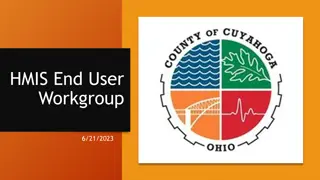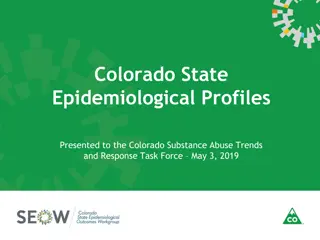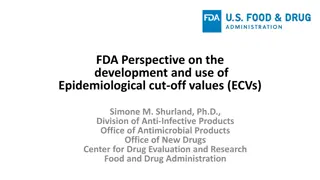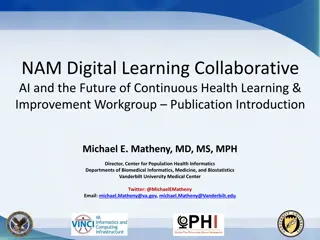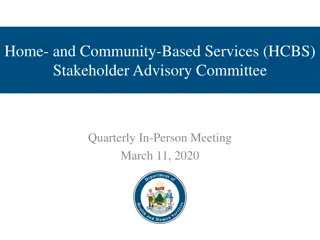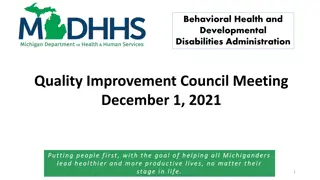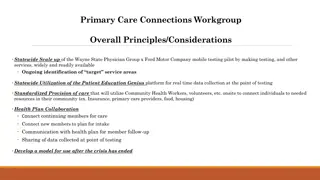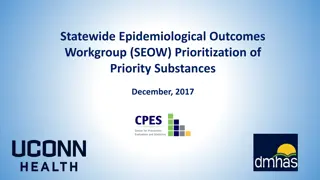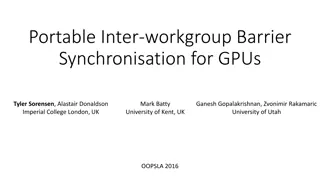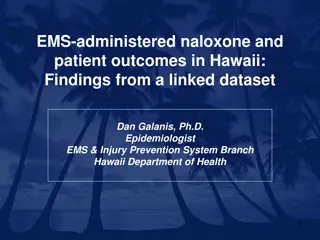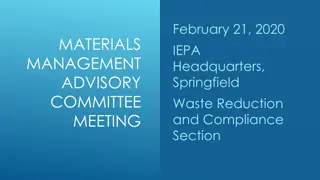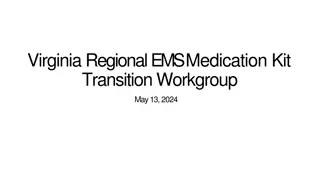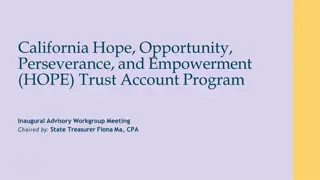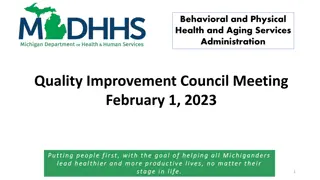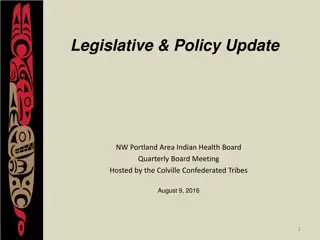Statewide Epidemiological Outcomes Workgroup Quarterly Meeting Overview
This overview captures the key discussions of the Statewide Epidemiological Outcomes Workgroup Quarterly Meeting. Topics included the NSDUH, Monitoring the Future survey, Youth Risk Behavioral Surveillance Survey, Arkansas Department of Human Services Annual Report, and Crime Information Center data. Issues related to data collection, prevalence of substance use, mental health patterns, and community characteristics were analyzed with a focus on addressing challenges and providing insights for future reports.
Download Presentation

Please find below an Image/Link to download the presentation.
The content on the website is provided AS IS for your information and personal use only. It may not be sold, licensed, or shared on other websites without obtaining consent from the author.If you encounter any issues during the download, it is possible that the publisher has removed the file from their server.
You are allowed to download the files provided on this website for personal or commercial use, subject to the condition that they are used lawfully. All files are the property of their respective owners.
The content on the website is provided AS IS for your information and personal use only. It may not be sold, licensed, or shared on other websites without obtaining consent from the author.
E N D
Presentation Transcript
Statewide Epidemiological Outcomes Workgroup Quarterly Meeting 03/01/2023 Supported by SAMHSA PFS Grant #6H79SP080990-01M001.
Topics to be Discussed National Survey on Drug Use and Health (NSDUH) Monitoring the Future (MTF) Youth Risk Behavioral Surveillance Survey Characterizing communities Arkansas Department of Human Services 2022 Annual Report Crime Information Center data 2
NSDUH What is the NSDUH? assess the prevalence and patterns of substance use and mental health issues among the general population of the United States overall and of states. Problem? COVID! Most respondents answered the survey via the web in Quarter 4 of 2020 but responses in Quarter 1 were all in-person interviews. Respond differently Assumed effect was same for all groups BUT Result Withdrew state-level estimates Caveats on data 2020 data is not comparable to data collected in any other year 3
NSDUH continued Options Young Adult State of Well-Being Already in press so added a caveat in data limitation Arkansas Epidemiological State Profile of Substance Use & future reports Present with caveats Not present at all Filling in the gaps Youth Risk Behavioral Surveillance Survey Behavioral Risk Factor Surveillance Survey Monitoring the Future 4
Monitoring the Future Same data collection issues as NSDUH 2020 data not comparable to any other year Same options as for NSDUH Present with caveats Don t present at all 5
Youth Risk Behavioral Surveillance Survey Only every other year, odd years 2021 state-level data now available 2021 US-level data available in the Spring 6
Characterizing Communities Old Food insecurity Housing quality New Social Vulnerability Index: potential negative effects on communities caused by external stresses [CDC and Agency for Toxic Substances and Disease Registry (ATSDR)] Community Resilience Estimates: provide an easily understood metric for how at-risk every neighborhood in the United States is (US Census Bureau) 7
Update Frequency Social Vulnerability Index Every 2 years (last update 2020) Community Resilience Estimates Initial 2018, updated last in 2019 8
